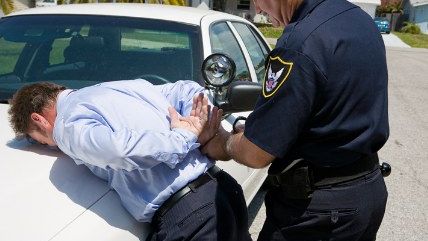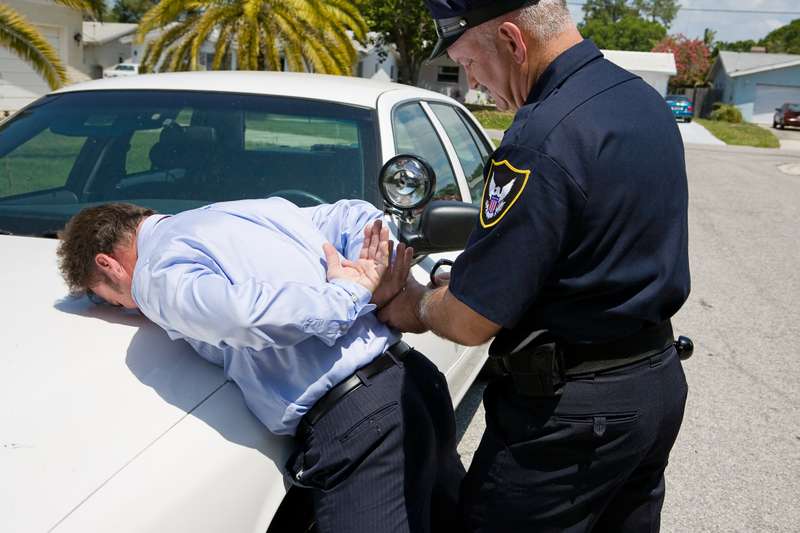Illinois Racks Up Millions in Property Seizures by Police
Newly uncovered documents reveal how much is taken, how much is forfeited-and the desperate need for more transparency.


Cars, guns, cash, PlayStations, a forklift, and even a statue of a Mexican folk saint: Illinois police raked in an estimated $72 million-worth of seized property over the past two years, public records obtained by the state chapter of the American Civil Liberties Union show.
Illinois has one of the more aggressive asset forfeiture programs in the country. In April, the Chicago Sun-Times ran a lead editorial calling on the state to reform the program. The Institute for Justice, a libertarian public-interest law firm, gave the state's asset forfeiture laws a "D-" grade for their lax property owner protections, low standards of evidence and expensive bond requirements to challenge seizures.
The ACLU records cover only two years, but they provide a wide-angle snapshot of what kind of property Illinois police seized, how much and where the proceeds flowed. They are also rare among records on asset forfeiture because they show the disposition of seized property.
Of the $72 million seized in those two years, the state only officially arranged for the full forfeiture of $16 million in the same time period. About $5 million was not ultimately kept.
Of that $5 million, some property was junked and some was used to cover court costs and fines, but $2.1 million was returned per court order—meaning courts found the state failed to show probable cause at preliminary hearings or the courts ruled against the state after trial. Prosecutors also dropped cases involving nearly $900,000 worth of property, the records show. In other words, police seized $3 million in private property on grounds that prosecutors or courts found too flimsy to hold up.
Only about $2,500-worth of forfeitures were reversed on appeal by circuit courts in the state, showing the scarcity of successful challenges to the asset forfeiture process.
"Either police are getting all these cases right, or there's serious deficiencies in challenging them," said Bryant Jackson-Green, an analyst at the Illinois Policy Institute, a right-leaning think-tank that supports reforming the state's asset forfeiture laws.
All of that still leaves about $50 million-worth of seized property sitting in state custody during those two years. The forfeiture process is notoriously slow. As the Illinois Policy Institute notes, state law allows for up to 187 days before a forfeiture hearing is required to take place.
Asset forfeiture laws were created in the '80s to disrupt drug traffickers and organized crime by seizing the fruits of their ill-gotten gains: cash, guns, and cars. And the tools of the trade are well represented in the list of Illinois seizures.
The list is full of digital scales, money counters, safes and guns (including AR-style rifles and shotguns). Among the seized vehicles are no less than six Cadillac Escalades, six Mercedes-Benz sedans, and a 2013 Triumph Bonneville Steve McQueen Edition motorcycle.
Electronics are an especially popular target for seizures by law enforcement, and the Illinois police are no different: Flatscreen TVs, especially of the 50" and above variety, were common items, along with smart phones, iPads, digital cameras, laptops and video game systems, and Beats by Dre.
But tucked among the cars and electronics are some head-scratchers: there's "179 bottles of miscellaneous soap and shampoo," a cordless drill and stapler, and a statue of Jesus Malverde, a Robin Hood-esque Mexican folk saint popular among drug runners.
One of civil liberties advocates' biggest criticisms of asset forfeiture is that the proceeds are funneled directly back to the police departments and district attorneys, creating a perverse incentive for law enforcement to go fishing for seizures.
The documents provided by the Illinois State Police, which administers the state's asset forfeiture program, reveal that—of the 426 local, state and federal law enforcement agencies that received payouts for the $16 million in forfeited property in those two years—the Chicago Police Department brought in the biggest haul: just a couple thousand dollars shy of $3 million.
The Illinois State Police took in the second highest amount with $2.3 million, followed by the Cook County State's Attorney at $1.8 million. The average payout was $38,200.
The total forfeitures were a bit lower than previous years, according to figures obtained by the Institute for Justice on the state's asset forfeiture program for 2009 through 2013. Dick Carpenter, director for strategic research at the Institute for Justice, said that although forfeiture proceeds tend to trend upwards over time, it's not unusual to see spikes or dips, comparing it to the "random walk" theory of the stock market.
"It's not unusual to see random walks, and the reason for that is on any given year there may be a handful of really large seizures, and that will create a spike as a result," Carpenter said.
For all that the records reveal, however, they also show just how much is left unknown without stricter public reporting requirements.
Besides noting that $13 million in seizures were connected to money laundering, the records do not distinguish between civil and criminal asset forfeiture, or under what offense the property was seized. For example, Illinois law grants police the power to seize vehicles under a wide variety of offenses, ranging from DUIs to gambling to terrorism to provisions of the Environmental Protection Act.
"Illinois' reporting is better than some states in that they actually have reporting, but it's far, far away from what we believe should be required," IJ's Carpenter said. "This is exactly the type of info we think should be reported to the public, but it's very rare that any state collects this or makes it available."
(View the documents here.)



Show Comments (168)